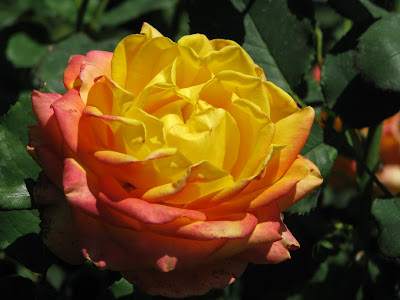
I whine every time I fail to make it to the Huntington Library on our family visits to Pasadena. A leaden heaviness sweeps through the soul, as a sour sense of life’s incompleteness and time’s waste roils within.
A trip to Pasadena without visiting the magnificent library and exhibits and its sprawling lawnscapes and museums is like touring San Francisco and consciously averting your eyes from the Golden Gate Bridge. Pasadena is a cool place to visit (especially considering it’s location in low-cal SoCal), but without the Huntington, it’s only a cool place to visit.
The Huntington Library, actually situated across the Pasadena city line in wealthy San Marino, was founded in 1919 around the home of its creator, railroad magnate and book, art and cactus collector Henry Huntington (also builder of the L.A. area’s legendary long-forgotten transit system). Once nearly 600 acres, its now down to 207 acres, of which 120 have been landscaped into what is one of the premier botanical gardens in the world: 14,000 varieties of plants organized under 15 different theme gardens, each one a sweet delight to city-blistered eyes and impossible to cover happily with a single visit
(I whimper when it’s time to leave, my voice dripping with little-boy heartbreak as though being dragged away from the amusement park with so much left to see and do: “Aww, Mom! I wanna see the Ellesmere manuscript of Chaucer's Canterbury Tales again! You never let me have any fun!”).
On our last visit, my wife and I took the docent tour to get a more overarching, systematic view of the Huntington’s grounds. The docent first led us through the Desert Garden with its fantastic, prickly, soft green jungle of cacti and others species of succulent plants: 5,000 species crowded together over 10 acres, including such odd exotics as the euphonious-sounding Euphorbia ammak.

Euphoria, indeed. Walking through the succulent forest seemed to raise the temperature on an
already warm day. At times, the baked environment stirred a dizzy sensation of caressive
otherworldliness; of impossible things made manifest, a mirror of what our souls might be like (and I do believe that Nature, humorless, devoid of nudging, winking irony, does possess or exhibit Soul . . . you may bring suit).

Our party left the ever-thirsting desert, promising to return before day’s end (a promise
regrettably forsaken) and wound our way up through the Lily Ponds, the first area planted by Henry Huntington’s superintendent of gardening, William Hetrich, in 1904: two large and three small ponds pooling on four acres, on whose olive-colored, mirror-still surfaces water lilies lazily boated under a soft blue sky.
(Water is a big issue here, a subject to be visited again in a later article).
Here, we also passed dense groves of bamboo, six of the seventy-five kinds that grow at the
Huntington. I learned that some species of bamboo are invasives as weed-like and stubborn as kudzu (in some cases, leading to dreaded infestations of pandas), but such horticultural challenges seemed to have been met here.
As you can tell from the photos (taken with a Canon Powershot) the Huntington poses itself like a louche model. You about have to stick your thumb in front of the lens to get a bad photo. The nine-acre Japanese Garden, overall, provided some of the best opportunities for lensing and even, on a crowded post-July 4 Sunday, seemed a peaceable dream.

The official tour ended in the Huntington’s newest garden environment, Liu Fang Yuan, or “Garden of Flowing Fragrance,” (which you could also call “The Garden of Scholarly Pursuit”) a ten-year project that cost $20 million and, to hearts hungry for beauty, was worth every shiny copper piece.
We’d been there before, shortly after it opened, so we didn’t stay long this time and, after a
short rest with mallards quacking around our feet, we quickly found ourselves turning back toward the tranquility of the Japanese Garden.

The photographer, with his growing affection for abstract shapes and their relationship to space,
also had trouble keeping his finger still while in the Bonsai Garden where there was too much
bright diffusing light to recreate the soaring sensation that he experiences every time he flies by
these sculpted, wizened little trees.


We ended our gardens tour in the perpetual blooms of the Huntington’s rows of roses, checked out a series of ironic, but pointed, photographs of the Colorado River system by Karen Halverson, briefly swung through the Samuel Johnson exhibit (an eccentric of overwhelming, enviable intelligence who assembled the first English-language dictionary). I rested and briefly perused a biography of the equally formidable Benjamin Franklin while Elizabeth explored “The Beauty of Science” exhibit.
Before we knew it, closing time’s shadow was creeping mournfully near. I sniffled and dragged my feet, complained to the staff about their short working hours and then wandered into the
Huntington’s excellent gift shop and bookstore, where only the bitter reminder of economic hard
times kept my wallet in my pocket and my hands returning every fondly held volume to the shelf.
We returned to Emeryville the next day. Tingeing with nostalgia, I surfed to the Huntington Web site where I impulsively clicked on their employment page and saw two openings for library
assistants. I then clicked the application page.
In this economy, we’re told repeatedly, you have to be prepared to do anything.












No comments:
Post a Comment